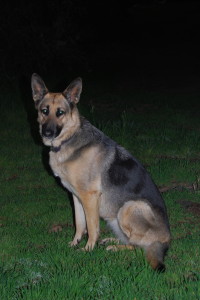 It has often been said that the secret to a good landing is a good approach. In flying, a good approach means that you hit all the altitudes and airspeeds you intended to, you are neither too high nor too low, neither too fast nor too slow, and that, above all, you remain stable. Remaining stable means that you are not continually fluctuating your airspeed, trying to nail your altitude and constantly shifting to find the centerline of the runway. Stability, in a good approach, is the key.
It has often been said that the secret to a good landing is a good approach. In flying, a good approach means that you hit all the altitudes and airspeeds you intended to, you are neither too high nor too low, neither too fast nor too slow, and that, above all, you remain stable. Remaining stable means that you are not continually fluctuating your airspeed, trying to nail your altitude and constantly shifting to find the centerline of the runway. Stability, in a good approach, is the key.
While I try to fly my approach in as stable a fashion as possible, I fail more often than I succeed. I have become perhaps overly confident in my ability to land, because I have a history of pulling it off at the last minute. This is bad technique, but a license to fly is a license to learn, and I keep learning.
I suspect that most of you have read these posts long enough to know what’s coming next. Hopefully, neither you nor I are close to our final landing, but to the extent that any single moment could be our last, it is not far-fetched to try to live life as if we were always on our final approach. And, in that sense, I confess that I have yearned to live my life as stably as possible. And, as in my flying, I tend to fail more often than I succeed. I am constantly struggling to find my right “airspeed” and stay on the centerline.
I don’t believe that I intend to live my life unregulated. I yearn for stability, but for some reason stability and my nervous system don’t want to cooperate. As I once had a yoga instructor who criticized my warrior pose because I was leaning too far forward, and I thought, “yup, that’s me… always leaning too far into the future,” perhaps my discomfort with stability has something to do with why I find it difficult to maintain stable approaches when flying.
But all this is overly simplistic. In reality, in order to fly a stable approach, a pilot has to make constant, hopefully small, adjustments. The pilot remains hyper-vigilant, sensing any shift in the wind and reacting quickly and gently in order to remain on target. This is by no means a passive activity. The irony of it all is that it takes a lot of activity to become stable.
That is where the difficulty of flying one’s final approach—and every other approach, comes in. Just how does one achieve the hoped for “perfect landing”? How does one face the inevitability of our flight coming to an end in such a way that we gently welcome the wheels to the ground, kiss the earth without having to frantically wrestle with our airplane?
Perhaps it is true that the secret to a good landing is a good approach. Perhaps what is required is relaxed pressure on the controls, while calmly but vigilantly making the small adjustments needed to maintain just the right airspeed and just the right altitude, such that when our wheels finally come to rest, we find that we have barely noticed that we have eased ourselves onto the tarmac. That would indeed be a good landing.

